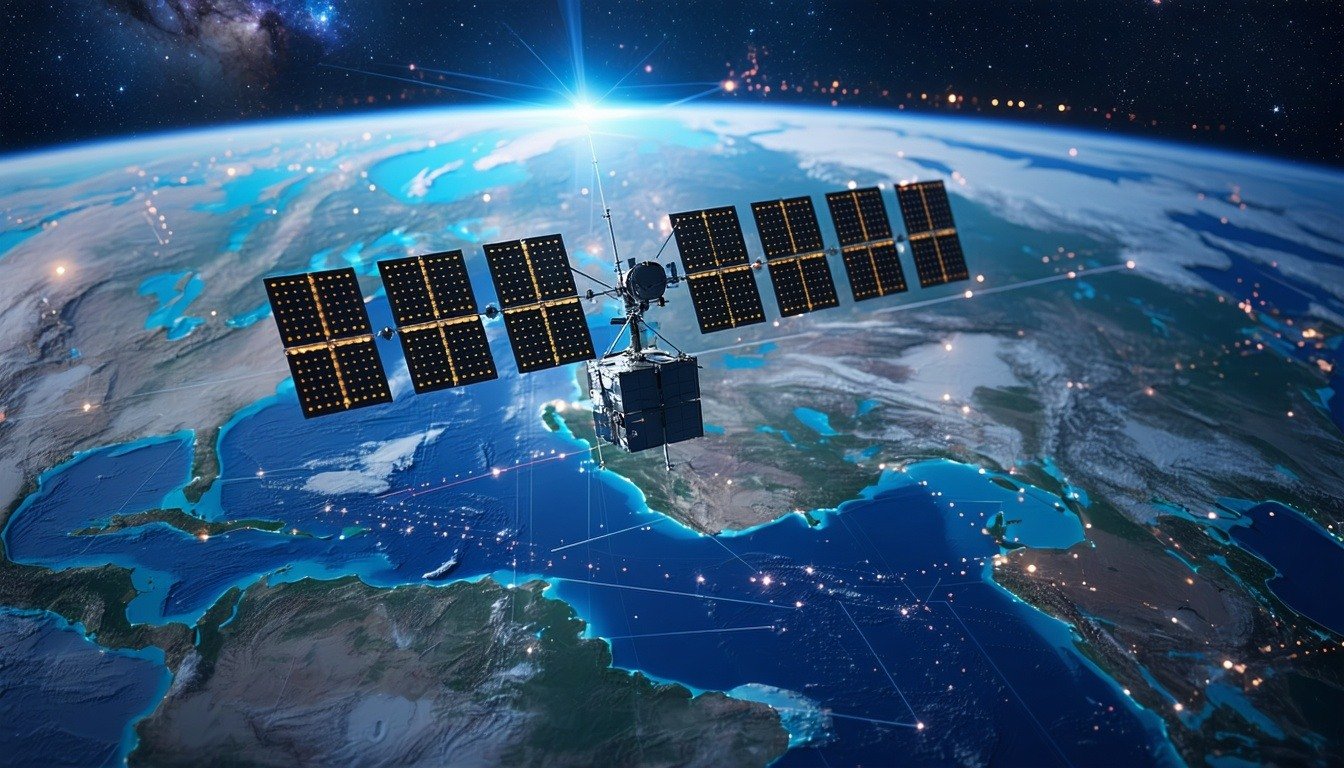Picture yourself residing on a remote island with a small population. Given the limited business prospectson your island, the likelihood of any Communication Service Provider (CSP) investing in terrestrial telecommunication infrastructure on the island is extremely low. The absence of Internet broadband can lead to educational challenges, limited access to information, economic disadvantages, vital healthcare limitations, social isolation, reduced innovation, and many more issues, all of which would have a detrimental effect on your community. This scenario embodies the essence of the “digital divide.”
While this situation might seem unimaginable for us, a staggering number of people, billions in fact, are living in the offline world without broadband access. In the Southeast Asia region, this phenomenon is especially prevalent due to the large rural populations, rugged topography, and poor economic conditions. Nevertheless, Satellite Communications (SatCom) services offer a promising technological solution to bridge the digital gap in Southeast Asia, as space-based Internet has no physical barriers to connectivity and could also be a cost-effective solution to connect extensive rural areas.
This article presents six key statistics regarding the digital divide in Southeast Asia, using data gathered by analysts from ABI Research. Subsequently, we will then explore the essential role that SatCom could play in addressing this challenge.
Before getting into these stats, let’s first understand why closing the digital divide is so important.
Below is the YouTube version of this video, if you're short on time.
Why Is Closing the Digital Divide So Important?
Closing the digital divide is important because it ensures equitable access to opportunities, information, and resources in an increasingly connected digital world. It promotes equal access to education, job opportunities, healthcare, and vital information. Without bridging the connectivity gap, marginalized communities would face disadvantages, hindering their socioeconomic progress. Furthermore, as technology plays a central role in today’s modern society, addressing this divide would be crucial to foster innovation and digital literacy.
Next, let's examine the initial statistics on the digital divide, which have been extracted from our recent research findings.
60%+ Rural Populations in Cambodia, Laos, and Vietnam
People living in rural areas are far more likely to fall under the digital divide than those in urban centers. According to data from the World Bank, the rural population percentages of Cambodia, Laos, and Vietnam are 75%, 62%, and 61% in 2022, respectively. These statistics translate to millions of people lacking connectivity services.
Having a substantial number of citizens living in rural regions presents a huge challenge in delivering Internet access to these communities. An effective alternative is to use satellite-based connectivity, as it is far less infrastructure-reliant than traditional broadband solutions. In July 2023, the first Starlink terminal was deployed at a smart farm in Cambodia, signaling the onset of a new satellite-centric era in the rural-heavy country.
You May Also Like
Tens of Thousands of Islands in the Southeast Asia Region
The geographical characteristics of the Southeast Asia region pose a considerable challenge in efforts to bridging the digital divide. With more than 24,000 islands between Indonesia and the Philippines alone, deploying and installing ground-based telecommunications equipment and infrastructure across all these islands is evidently impractical.
Satellite Internet would be an excellent connectivity solution for connecting the thousands of islands in Indonesia and the Philippines for several key reasons such as its geographical coverage capabilities, its rapid deployment, and scalability.
1.8 Million Satellite Communications Subscribers by 2028
ABI Research forecasts that satellite communications subscriptions in Southeast Asia will grow at a Compound Annual Growth Rate (CAGR) of 20% between 2023 and 2028—reaching more than 1.8 million subscriptions by 2028. As governments continue to bridge the digital divide, satellite connectivity would be a key enabling technological solution. This growth in SatCom subscriptions will be driven by collaborative efforts between government agencies, CSPs and satellite operators, increased investment and resources, advancements in space tech, and supportive policy measures.

Internet Penetration Disparities in Southeast Asia (2021)
In 2021, the countries in Southeast Asia boasting the highest levels of Internet accessibility were Brunei (98%), Malaysia (97%), Singapore (91%), and Thailand (85%), as reported by data collected by the World Bank.
Conversely, countries with the lowest Internet penetration rates in Southeast Asia include Myanmar (44%), the Philippines (53%), Cambodia (60%), and Indonesia (62%). The adoption of SatCom would have the potential to substantially improve these low Internet penetration rates, thanks to its extensive coverage capabilities, scalability, and global reach.
Related Content
Satellite Connectivity Costs versus Terrestrial Fiber
Research conducted by Tarana Wireless has estimated that the cost of fiber deployment per kilometer is approximately US$2,800 for aerial installations and US$5,200 for buried installations. Given these cost considerations, satellite Internet would be an economically efficient solution for connecting expansive rural areas in countries such as Vietnam, Cambodia, and Myanmar.
Satellite Internet could be a more cost-effective solution to significantly reduce the digital divide and extend digital opportunities to these underserved and unserved rural communities.
More Than 9 Million People Affected by Natural Disasters in Indonesia, Vietnam, and the Philippines
Southeast Asia is home to several countries situated within the Pacific Ring of Fire, a region known for its high tectonic activity, including earthquakes and volcanic eruptions. Some of the Southeast Asian countries within or adjacent to the Ring of Fire include Indonesia, the Philippines, Malaysia, and Vietnam. When natural disasters occur, they often leave millions of people without Internet access. For example, Our World in Data reports that natural disasters affected 9.22 million people in Indonesia, Vietnam, and the Philippines in 2020. This translated to a 0.73% decrease in Gross Domestic Product (GDP) output.
When these natural disasters strike, communications services are a matter of life and death. Terrestrial Internet infrastructure, such as fiber-optic cables and cell towers, is not resilient to natural disasters and can be severely impacted by events like earthquakes, hurricanes, floods, and wildfires. Physical damage, power outages, network congestion, and infrastructure accessibility are some of the vulnerabilities of the terrestrial Internet infrastructure. On the other hand, satellite Internet can be a very valuable digital technology in disaster-prone areas, as it offers greater resilience and can maintain connectivity when the terrestrial networks are compromised. Satellite Internet is not dependent on physical infrastructure that can be damaged in the event of disasters, and it can be rapidly deployed to provide critical communication services during and after disasters, aiding with emergency response and recovery efforts.
An example of satellite-based services being sustained during these emergency events was Apple’s satellite-based emergency SOS feature used in the Maui wildfires.
What Have Satellite Communications Providers Done to Close the Digital Divide in Southeast Asia?
As these statistics show, satellite Internet could be a potential game-changer for closing the digital divide in Southeast Asia. SatCom services provide a cost-effective way to provide high-speed Internet access to millions of people living in rural, hard-to-reach regions. Additionally, satellite Internet would be a valuable tool for disaster resilience, ensuring that communication remains intact during and after disasters, facilitating effective response and disaster recovery efforts. From education to tourism, a wide array of sectors will benefit from satellite broadband services in the region.
It comes as no surprise that we’re witnessing significant activity in Southeast Asia recently, with Low Earth Orbit (LEO) and Geosynchronous Earth Orbit (GEO) satellite providers striking partnerships with many local governments.
- Starlink: Starlink began offering satellite-based broadband to rural Malaysian villages for US$48 (MYR$220) per month in July 2023. Moreover, Malaysian Prime Minister Anwar Ibrahim has declared plans to leverage 40 Starlink devices in educational institutions. Island nations of Indonesia and the Philippines have also collaborated with Elon Musk’s SpaceX to connect remote regions.
- Kacific: Singapore-based satellite communications provider Kacific has struck more than 160 partnerships with Filipino connectivity distributors and 18 local Internet Service Providers (ISPs) to help close the digital divide in rural regions. In Indonesia, the company has been crucial in extending satellite Internet to government infrastructure, schools, health facilities, tourist attractions, and more.
- IPSTAR: A subsidiary of Thaicom, IPSTAR has been chosen to support satellite Internet for the roughly 47% of Thailand’s population living in rural settlements. Most notably, IPSTAR’s satellite services are prominent in the education sector, where its space-bound broadband solutions connect teachers and students to the Internet in remote areas of the country. This enhances learning outcomes by facilitating the use of digital resources, such as online assignment submissions, Video On Demand (VoD), interactive online quizzes, and more.
For more on how satellite Internet connects millions of people in the Southeast Asia region to the Internet, download ABI Research’s Connecting the Unconnected: Utilizing SatCom to Close the Digital Divide report. This content is part of the company’s Satellite Communications and Southeast Asia Digital Transformation research services.




